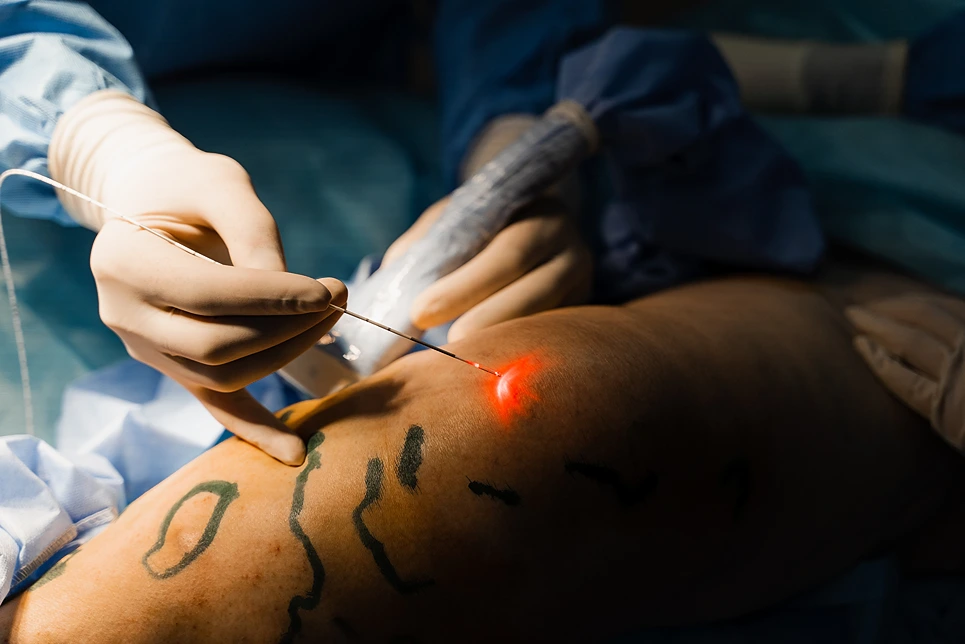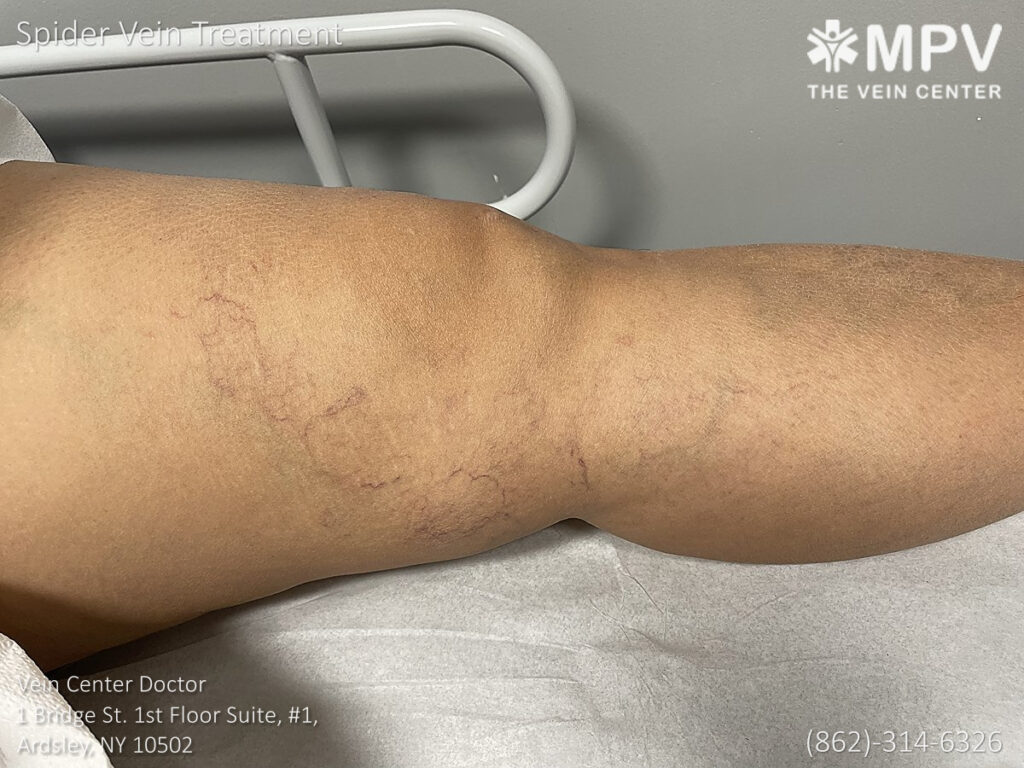Spider veins, colloquially termed varicose veins, refer to damaged and dilated blood vessels that appear close to the skin's surface.
They often manifest as thin, blue or purple lines that resemble spider webs or tree branches, hence the name.
While spider veins are rarely dangerous on their own, they can signify underlying issues with the circulatory system. Some individuals develop spider veins as a result of a genetic predisposition or hormonal changes during pregnancy.
Prolonged standing, obesity, and advanced age also elevate the risk of developing spider veins over time.
Although spider veins tend not to cause noticeable symptoms in most cases, some people experience minor issues like aching, cramping, or itching in the affected area - particularly after standing for long periods. However, these issues are typically independent of the veins themselves.
Medical treatment for spider veins is usually not required unless they become bothersome for cosmetic reasons.
The most common option involves injecting a solution into the vein to collapse it, causing the vein to fade over several weeks. Laser therapy is another alternative, where concentrated light is used to destroy tiny spider veins, especially in the face.
While spider veins are largely benign, certain individuals may opt for minimally invasive procedures to remove them for aesthetic purposes. However, it's always wise to see a healthcare provider first to rule out any underlying circulatory problems that may require more immediate attention.
Living with unwanted veins is a thing of the past, when you can simply schedule a free consultation with Vein Center Doctor and find your ideal solution today.
Spider veins tend to form when the tiny valves within the vasculature become weak or damaged. These valves help keep blood circulating properly through the veins, but when they lose function, blood starts to flow backward and accumulate in the vein.
This buildup of blood within the vein puts pressure on the vein walls, stretching and weakening them over time. Eventually the vein enlarges and comes closer to the skin's surface, manifesting as those telltale spider veins.
Several factors can make a person more susceptible to developing spider veins:

For most individuals, spider veins do not require medical treatment unless they cause discomfort or become bothersome due to their appearance. However, there are a few treatment options available for those seeking relief:
This is a minimally invasive procedure where a solution is injected directly into the spider vein. The solution irritates the inner lining of the vein, causing it to swell and stick together.
Over time the vein shrinks and fades in color. Sclerotherapy is effective for small to medium-sized veins, although multiple sessions may be needed for optimal results.
A type of laser light is targeted at the spider vein, heating it from the inside and causing it to seal shut. The vein then fades over several weeks.
Laser treatment works best for smaller spider veins, especially those on the face. Multiple treatments may be required for large clusters of spider veins.
Both of these options aim to close off the damaged vein and allow the body to naturally absorb it over time. Treatment success rates are typically high for reducing the appearance of spider veins, though recurrence is possible.
Before undergoing any treatment, it's important to consult a dermatologist or vein specialist to discuss your specific needs and goals. In some cases, spider veins may indicate an underlying circulatory issue that warrants further evaluation and management prior to cosmetic treatment.
While they cannot remove existing spider veins, certain actions may help minimize their appearance and reduce the risk of new ones forming:
Smart lifestyle choices, when paired with minimally invasive treatments as needed, offer the best approach for managing stubborn spider veins over the long term.

While certain factors such as genetics and age increase everyone's risk of developing spider veins, there are proactive steps you can take to minimize your chances:
Regular exercise: Aim for at least 150 minutes of moderate activity per week. Walking, swimming, and low-impact fitness classes are great options that improve blood flow without straining your veins.
Lose excess weight: Extra weight increases vein pressure, especially in your legs. Even modest weight loss through a healthy diet and exercise can help reduce this strain on your vascular system over time.
Altitude training: Periodically spending time at higher elevations — whether through travel or simulated exposure — may help stimulate your circulatory system and vein health in a protective way.
Stay hydrated: Drinking plenty of water, especially when standing for long periods, keeps your blood volume optimal to reduce pressure within your veins. Shoot for around 8 glasses (64 ounces) of water per day.
Compressions stockings: These specialized socks apply subtle pressure to your leg veins, assisting blood flow back to the heart and reducing pooling that can damage veins. Wearing compression stockings while standing for long periods can help prevent spider veins.
Stretch and flex: Taking frequent breaks to flex your feet, ankles, and calf muscles when standing or sitting for long periods promotes circulation and reduces vein strain that can lead to damage over time.
While these lifestyle measures won't make existing spider veins disappear, they can help fortify your vascular system against future vein damage. Combined with treatment options as needed, a comprehensive approach centered around a healthy lifestyle offers the best chances of managing spider veins long term.
Find exactly what you need to get rid of your vein-related problems. Dr. Sood and the rest of our team at Vein Center Doctor are ready to help: schedule your free consultation today.
Most Insurance is accepted for treatment